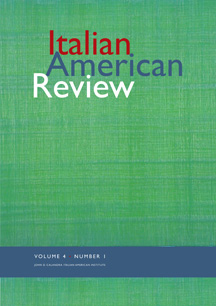Café au lait to Latte: Charting the Acquisition of Culinary Capital by Italian Food in America
from the Introduction
In the post–World War II period in the United States there was a dichotomy in Italianate food: While there was widespread popular acceptance of what might be considered “Italian-American” fare—baked ziti, spaghetti with meatballs, California-made Chianti in a flask—high-status Italianate cuisine was restricted to a relatively small number of fine Italian restaurants. Fine dining—or, more appropriately, haute cuisine—meant French food almost by definition. At some point in the recent past, Italianate cuisine closed the gap between red-and-white checkerboard tablecloths (low brow) and red-coated waiters (high brow). The most obvious reasons for this transition—that Italianate food is inexpensive, that Italy is a popular tourist destination, that Italian food is delicious and “simple” as well as healthy—immediately run into a problem of chronology. Italianate food’s low cost has attracted American consumers at least since Prohibition, as will be discussed below. Italy has been a popular destination for American tourists since they began participating in the Grand Tour in the early 1800s; while the protagonist of The Talented Mr. Ripley dreams of Italy in a novel set in the mid-1950s, it was René Verdon whom the Kennedys hired for the White House in 1960, not an Italian chef. As Harvey Levenstein observed, this helped put French cuisine at the “pinnacle of status.” Similarly, many of the most popular Italian dishes have been around in some form or another for a century if not longer, and Ancel and Margaret Keys’s book promoting the so-called “Mediterranean diet” was published in 1959. Why then was Italianate cuisine able to acquire culinary cachet—not only with the upper crust but also with a broad swath of upper-middle America—only so late in its developmental history?

